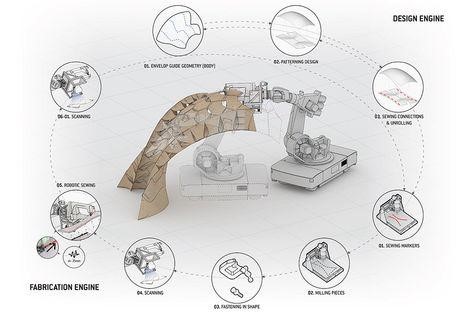Engineering & Technology
PHD Dissertation
- Architecture Robots & 3D Printers
- Downsizing and Turbocharging
- Advanced Combustion Modes
- Organ-on-a-chip
- Water minimization techniques
- Virtual Realities and Immersive Architecture
- Technological Developments For Electrical Vechicles
- Drones or Unmanned Aerial Vehicles(UAVs)
- Modular Construction and 3D Printed Dwellings
- Advances in Gas turbine technology
Architecture Robots & 3D Printers
Additive manufacturing is the industrial-strength term for 3D printing. Robots today 3D print landing flaps, ship propellers, engine radiator tanks and artwork. And: 3D printers also help us build robots. Robotic arms even print entire architectural structures, and that’s a sight to behold.
Branch Technology works with architects and designers to re-imagine the boundaries of construction. They have some truly amazing projects under their belt, including the Design Miami Pavilions shown at the top of this post. They’ve found innovative ways to build very strong structures by combining 3D-printed structures with traditional construction materials.( If you are looking at this 3D printing thesis help.)

Fig.1. 5D 3D Printed & Robotic for Architecture Ideas (Pinterest.com)
The iconic modern architect that revolutionized the New York skyline of the 1940s, Ludwig Mies Van der Rohe, defined the beginning of architecture as the tectonic moment when two bricks are carefully put together. However, we might now have to rethink his definition. Even though we are currently on a trajectory to build as many houses as the inner city of Paris each week, methods of construction have surprisingly barely evolved from the times of Mies Van der Rohe. Compared to other manufacturing sectors, the increase in productivity of our industry shows stagnation – mainly because digitization has not yet found its way into the sector. This is especially surprising given this sector’s size and impact: The cement industry is responsible for more CO2 emissions than airplane travel each year, and over 15% of our global GDP is related to construction.
Additive manufacturing allows us to distribute material only where needed: We can now functionally grade material, strategically controlling where it should be strong or where lightweight. We can design and program the properties of objects on the material level. The result: digital materiality.
